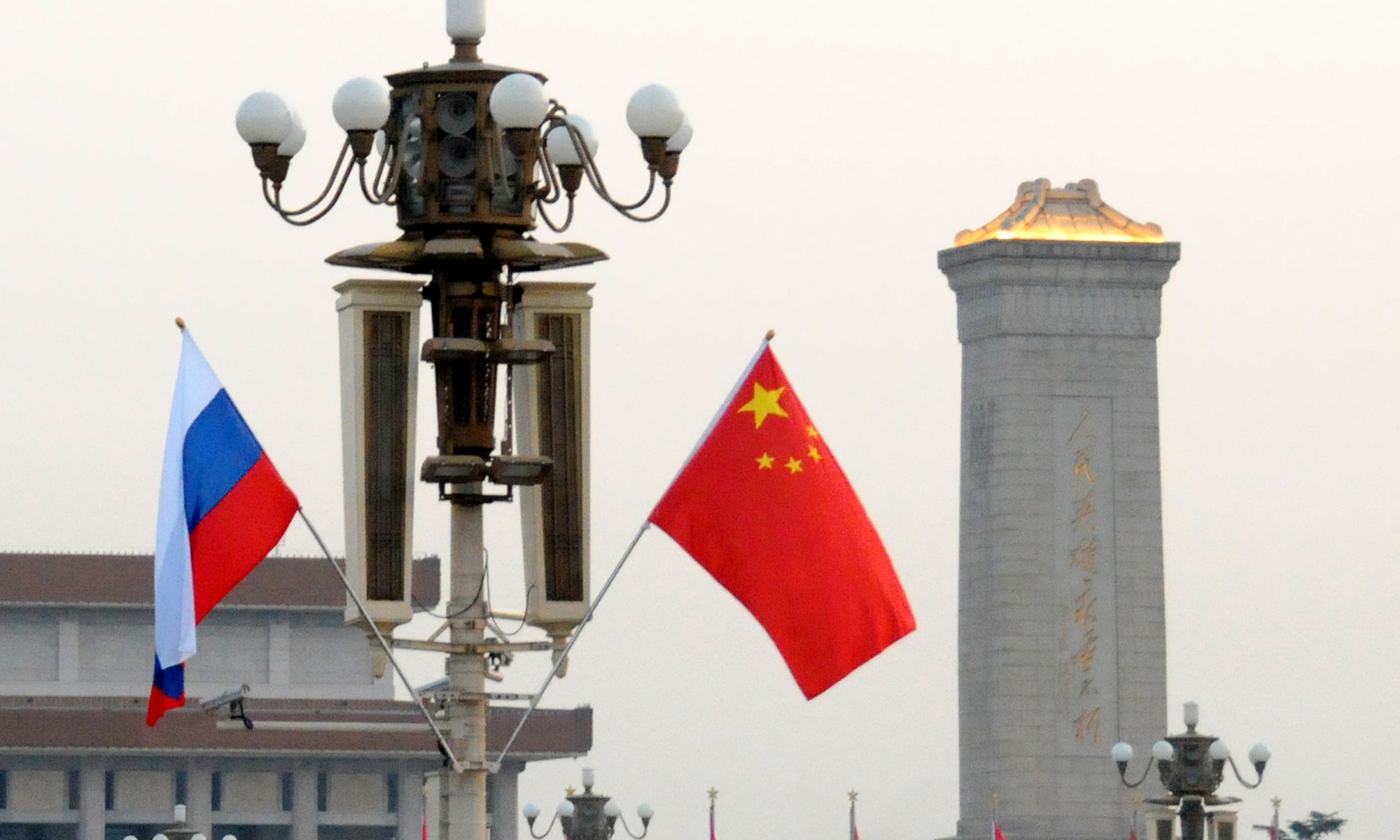Exclusive: China, Russia to sign new 5-year space cooperation program, build intl lunar station by 2035: Roscosmos

China-Russia Photo: VCG
China and Russia will sign a new space Cooperation Program for 2023-2027 next year, which will include a plan to create an open and inclusive International Lunar Research Station (ILRS) by 2035, Russia's national space agency Roscosmos told the Global Times in an exclusive interview.
The new program will also include plans to support the development of the ground segment of the two countries' national satellite systems, Russia's GLONASS and China's BeiDou Navigation Satellite System (BDS) to be installed next year, as well as a slate of exciting projects Roscosmos and the China National Space Agency (CNSA) will work on in the coming decades as the two countries join forces to achieve new heights in the sphere of space exploration.
In contrast with the US lunar exploration project known as the "Artemis Accords," which experts believe reveals its "exclusive nature for mimicking a space-based NATO," China and Russia's partnership stresses bringing advancement for all, with the vision of building a community with a shared future for mankind.
Creation of lunar outpost for all
As the largest current cooperation project between the two "longstanding and reliable partners" in the space field, the ILRS provides for the construction of a station by 2035 on the lunar surface, while experimental and research facilities for a wide range of scientific work would operate in lunar orbit, the Russian national space agency's press service said in a statement responding to Global Times' inquiries.
Roscosmos revealed to the Global Times that it is assumed the ILRS will include an Earth-to-Lunar flight system, an auxiliary long term operation system on the lunar surface, a lunar surface travel and operations system and automatic facilities with complexes of scientific instruments.
The scope of cooperation between Beijing and Moscow in the project would include strategy development and coordination related to lunar exploration and use, identifying areas of cooperation and planning, and cooperation in launching component parts of the ILRS, joint operation, control, including ground station support, and other activities, as well as joint conceptual and preliminary design, modeling and validation of the ILRS and its components.
China and Russia are working on a draft of a legally binding intergovernmental agreement on the project, which is due to be signed in 2022, Roscosmos said.
Song Zhongping, a space analyst and TV commentator, told the Global Times on Wednesday that the extensive cooperation plans that China and Russia are developing indicate a high-level of political mutual trust, as well as mutual trust in science and technology. This type of cooperation will not only benefit them both but bring greater help to enrich mankind's understanding toward the vast universe.
In March this year, approved by the two governments, the two heads of the CNSA and Roscosmos signed a memorandum of understanding (MOU) on joint construction of an international lunar research station via video link, which stressed the principles of joint consultation, construction and sharing, to push forward cooperation concerning the building of the international research station on the moon.
Following that, China and Russia issued a joint declaration on the creation of the ILRS in April amid the national celebration of Space Day of China 2021, emphasizing the project is open to all international partners interested in cooperation.
Phase-4 missions
Wu Yanhua, deputy administrator with the CNSA, recently disclosed to media that state authorities have approved the fourth phase of China's lunar missions, which will include new Chang'e-6, 7 and 8 missions, which are expected to be carried out in the next decade.
China plans to launch the Chang'e-7 probe to the lunar South Pole first, which will be followed by Chang'e-6 for a sampling and return mission from the lunar South Pole.
And Chang'e-8, the last piece of the fourth phase, will construct a primary form of the ILRS.
Wu said although China will lead those three lunar missions, Russia's cooperation in the joint creation of the ILRS can be expected in the process, and we will join hands to explore the lunar environment and resources in the quest to find out how to peacefully use lunar resources to lay solid ground for the future.
Wu stressed that openness and inclusiveness is the key path to advance to the center of the stage of world space, and China has signed some 160 cooperation agreements with nearly 60 countries and international organizations worldwide.
Adding to its cooperation with the upcoming Chang'e lunar exploration series, Roscosmos said they have begun implementing interagency agreements with CNSA in the coordination of the Russian Luna-Resurs-1 (OA) orbital spacecraft and the Chinese Chang'e-7 mission, as well as on cooperation in the creation of a joint Lunar and Deep Space Exploration Data Center, which was signed on September 17, 2019.
"A particular feature of this project is the openness to participation by other international partners," Roscosmos said.
Danil Bochkov, an expert at the Russian International Affairs Council, told the Global Times that Moscow "expects space-research initiatives to be more open and cooperative, not facilitating 'NATO-in-space' political projects."
"It is exemplified by such outstanding initiatives of bilateral cooperation as the International Lunar Research Station, which also comes with foreign policy implications. Russia - though invited by the US to participate - has criticized similar Moon research project by NASA blaming the "Artemis" project for its exclusive nature by mimicking a space-based NATO," Bochkov noted.
"Although cooperation between Russia and the US in the space sector is still being carried out, the US has been suppressing Russia's space power," Song Zhongping noted. "It's more about getting what they want from each other, which in fact is not cooperation in the real sense, only mutual suspicion."
"By contrast, what China and Russia are working on reflects the common needs of players worldwide, with the vision of building a community with a shared future for mankind," Song said.
Compatibility & Complementarity
The 2018-2022 Russian-Chinese space cooperation program will end next year, Roscosmos said, adding that the program has proven to be an effective tool for stimulating bilateral cooperation at the industry level.
The Global Times learned that the CNSA is developing a list of mutually beneficial projects with Roscosmos that will be included in the new Cooperation Program for 2023-2027.
In addition, work is under way to develop Russian-Chinese cooperation in the field of satellite navigation, in particular to ensure the compatibility and complementarity of the GLONASS and BeiDou (BDS) navigation systems.
On November 29, 2021, the Russian-Chinese Roadmap for Cooperation in Satellite Navigation for 2021-2025 was signed, which includes plans for the integrated and innovative development of GLONASS and BDS.
Specifically, there are plans to support the development of the ground segment of national satellite systems. In this regard, both sides have identified locations of mutual ground measuring stations for GLONASS and BDS, which are to be installed in 2022, Roscosmos said.


